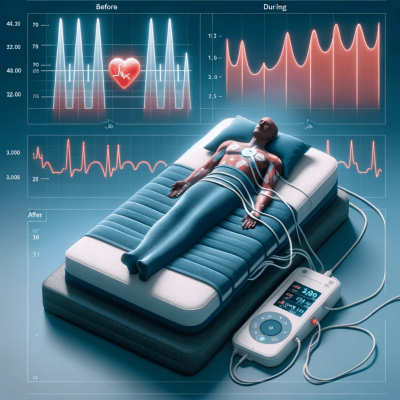In today?s health news, we will look into the new digital app released by the World Health Organization, the Ministry of Public Health of Qatar, and FIFA with the goal of encouraging more physical activity and enhancing the health and well-being of millions of young people. Meanwhile, the Lancaster Breakfast Rotary Club has started the “Pedals Possible” program to give the Lancaster County School District roughly a dozen bikes. Students can increase their joint mobility, the general range of motion, and core strength with the aid of special features. We will also learn about the recent study that higher-intensity exercise causes internal organs to use more glucose, which could lower the amount of energy required for tumors to spread.
Table of Contents
ToggleNew digital app was launched to promote physical activity
Original Source: Digital app released to boost physical activity ? and help get children moving
On the eve of the FIFA World Cup Qatar 2022, the WHO, Qatar’s Ministry of Public Health, and FIFA are unveiling a new digital app to encourage physical activity and enhance young people’s health.
GenMove, Season1 is a gaming app for 8?15-year-olds that uses superior movement tracking and AI. The activities require a variety of motions to enhance physical skills and are suitable for all fitness levels.
WHO advises 60 minutes of moderate-intensity aerobic physical exercise per day, including muscle- and bone-strengthening activities 3 times a week. More than 80% of adolescents don’t fulfill these requirements, and it’s believed that they spend more than 8 hours a day being sedentary and inactive, which can lead to poor fitness, weight gain, and diminished sleep. The software is meant to inspire similar efforts to make kids active worldwide.
Dr. Tedros Adhanom Ghebreyesus, WHO Director-General, said regular physical activity provides lasting advantages for physical and mental health and is vital for children’s healthy development. ?Today, WHO launched GenMove Season1 with Qatar. This kind of digital innovation can reach kids who don’t play sports and get them moving.
Dr Hanan Mohamed Al Kuwari, Qatar’s Minister of Public Health, launches the app today at the Walk the Talk – Health for All Challenge. The 3- and 5-kilometer walks engage individuals of all ages and abilities and promote physical activity.
Her Excellency Dr Hanan Mohamed Al Kuwari said Qatar is happy to present this invention for youngsters on the eve of the FIFA World Cup Qatar 2022TM. We’re committed to increasing physical activity and improving young people’s health in Qatar and around the world. The COVID-19 pandemic has limited physical education and school sports, therefore we must promote physical activity and use digital technologies to give innovative and entertaining ways to stay active.
GenMove activities incorporate jumping, reaching, and kicking to improve kids’ confidence and enjoyment of moving. The games can be played indoors or outdoors using a smartphone or tablet (IOS or Android) and a modest space.
Goalkeeper Alisson Becker, WHO Goodwill Ambassador for Health Promotion, loves GenMove. Technology opens the world, but it can make you sedentary. So, GenMove helps. You may have fun with your kids, or alone, and be healthy.
Inactivity costs public health care systems a lot, says WHO’s Fiona Bull. Getting children to enjoy being active and create daily habits is key to preventing noncommunicable diseases like heart disease, overweight and obesity, hypertension, diabetes, and many malignancies.
GenMove is partnered with a FIFA program called “Bring the Moves” that invites young people to post their goal-celebration moves online and develop a following of active young people throughout the World Cup.
‘Pedals Possible’ program was launched to encourage students physical activity through bicycling
Original source: ‘Pedals Possible’ program aims to help students improve physical health through bycyling
The Lancaster Breakfast Rotary Club has started the “Pedals Possible” program to give the Lancaster County School District a dozen bikes similar to these.
Lancaster Rotary Club President Chad Catledge told WCNC Charlotte, “to utilize this opportunity to give this demographic of students?special needs students?the opportunity to focus on their talent rather than their condition.”
Students’ core strength, general range of motion, and joint mobility can all be improved thanks to the special characteristics.
“This one has it under control. they can hold it here, here, or here; it just improves their turning range of motion “Special education instructor Anita McDow remarked. “The main problem is slipping off the pedals, which they have no problem with when it’s strapped on.
Researchers want to gather information on the advantages of the bikes through a collaboration with MUSC Health University Medical Center in Charleston.
“Physical therapist Nikki Wad stated, “Our aim is to make them as independent and strong as possible, so this allows us to do that in ways that they wouldn’t have previously.
According to what we’ve been told, the price of an adaptive bike like this can range from $1,000 to $4,000. The objective is to supply more bikes to more schools, though, due to local fundraising efforts from people and organizations.
“We really want this curriculum to be implemented in every school district. We’re thrilled that Lancaster will be the first of the more than 16,000 school districts in the United States “said Catledge.
Pedaling forward to greater opportunities. By sending an email to pedalspossible@gmail.com, you can give bicycles to the “Pedals Possible” campaign.
High-intensity exercise can cut the risk of metastatic cancer by up to 72%
Original source: Metastatic cancer risk reduced by as much as 72% with high intensity exercise
Metastatic cancer has spread to another body component.
623,405 Americans had metastatic breast, prostate, lung, colorectal, bladder, or melanoma in 2018.
While working with other researchers, Prof. Carmit Levy, Ph.D., of Tel Aviv University became interested in how muscle resists metastatic cancer.
New research from Tel Aviv University, published in Cancer Research, suggests high intensity aerobic exercise may reduce the risk of metastatic cancer.
Prof. Levy became interested in physical activity after studying muscle. We said, “OK, muscular exercise may protect this organ from cancer spread.”
The researchers discovered how exercise prevents disease. Physical activity boosts internal organ glucose consumption, reducing tumor energy.
Senior lead scientist in epidemiology and behavioral research at the American Cancer Society, Erica Rees-Punia, Ph.D., MPH, outlined the underlying mechanism to MNT:
“Exercise’reprograms’ our organs to need more nourishment. Exercisers’ healthy organs can outcompete melanoma cells for nutrients. This reduces the tumor’s access to nutrition.
Examining the effects of exercise in those who are cancer-free
Prof. Levy and Dr. Yftach Gepner, senior lecturer at Tel Aviv University’s School of Public Health, merged data from the Israel Center for Disease Control and the Israeli Ministry of Health’s Nutrition Department.
They investigated 2,734 cancer-free Israeli men and women ages 25 to 64 before and after running.
Ten-minute quizzes asked about intense and moderate activities. The study lasted 20 years.
14 runners ages 25 to 45 were also recruited.
Participants with chronic respiratory, cardiac, metabolic, or orthopedic disorders were eliminated.
Before testing, they were urged to forgo coffee for 12 hours, food for 3 hours, and vigorous exercise for 24 hours.
Participants ran 30 minutes at top pace on a treadmill.
Next, researchers measured ventilator and metabolic data breath-by-breath and tracked heart rate with a chest strap. Before and after exercise, blood was drawn.
Exercise’s effects on mice with metastatic cancer
In another study, mice were exercised.
They chose female mice because they exercise more than males.
Control mice were utilized. The other was treadmill-trained. Mice exercised biweekly. Researchers gradually raised workout duration and intensity. 8 weeks passed.
Some mice got melanoma cells. After 4 days of rest, researchers put the mice on the treadmill for 4 weeks.
Later, researchers removed sedentary mice’s lungs, lymph nodes, livers, and skeletal muscles for proteome and ex vivo metabolic capacity assessments.
?We took metastasis-prone organs,? Levy told MNT.
“So we dissected the organs to observe how they reacted to long-term exercise.”
Exercise’s effect on internal organs
Blood proteomics demonstrated higher glucose use after exercise in regularly active people.
The study found that exercise before cancer diagnosis had a small effect on slow-growing cancers.
Researchers found that exercise reduced the risk of metastatic cancer.
Aerobic exercisers had 72% fewer metastatic cancer than sedentary people.
In a mouse study, exercising before injecting cancer cells “significantly protected” mice from metastases in distant organs.
Exercise promotes catabolic processes, glucose absorption, mitochondrial activity, and GLUT expression, according to proteomic and ex vivo investigations of mouse organs.
Long-term physical activity alters organs and muscles (muscle mass) in mice.
Chronic physical activity changes cancer-hosting organs like lymph nodes, lung, and liver, Levy told MNT.
“They become hypermetabolic.” Super metabolic means their need for glucose, mitochondria, and glucose uptake is growing. “Their organs are superhuman.”
Researchers believe cancer loses when attacking these organs.
Dr. Adrian Cristian, chief of cancer rehabilitation at Miami Cancer Institute, part of Baptist Health South Florida, told MNT that this study showed “exercise induces changes in the micro-environment of cancer cells that make it unfavorable for them to proliferate”
Exercise and metastatic cancer: future research
Future studies could examine whether high-intensity exercise is needed for protection, Levy told MNT.
Levy: “We studied aerobic.” “I’m not saying Pilates doesn’t. We haven’t researched other [kind] of exercise.
Researchers are especially interested in how exercise affects cancer patients and how long the protective benefit of exercise lasts when people stop working out.
When does the body forget? Levy: “We don’t know.”
The study’s authors are examining how exercise affects brain metastases.
Dr. Cristian says additional research is needed on how exercise affects metastatic breast, prostate, colorectal, lung, and gynecologic malignancies.
Dr. Cristian asked which malignancies respond best to exercise to reduce metastatic spread.
Summary of today?s physical health news
Overall, the World Health Organization, the Ministry of Public Health in Qatar, and FIFA start a big digital health program for kids and teens. GenMove, Season1 is a game app that uses advanced movement tracking and artificial intelligence (AI) technology to give 8?15-year-olds an active video game experience. The games require kids to move in different ways, which helps them learn new physical skills. They can be played by kids of all fitness levels.
Meanwhile, the Lancaster Breakfast Rotary Club has started a program called “Pedals Possible” to give the Lancaster County School District about a dozen bikes. The unique parts are made to help students improve their range of motion, joint mobility, and core strength. Physical Therapist Nikki Wad said, “Our goal is to make them as independent and strong as possible. This lets us do that in ways we couldn’t do before.”
Finally, a recent study found that organs used more glucose when they were doing high-intensity aerobic exercise. Researchers think that this link makes it harder for tumors to get the energy they need to grow. Researchers used data from a prospective study to find that people who regularly did high-intensity aerobic activity had 72% less metastatic cancer. In another study with mice, scientists found that aerobic activity stopped metastatic tumors from growing in the mice’s lymph nodes, lungs, and livers.








